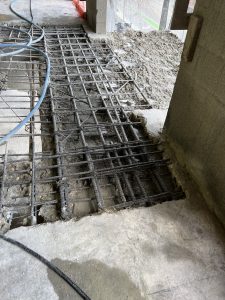Bridge removal is a complex process that requires precision, efficiency, and safety. Over the years, various methods have been employed to dismantle old or damaged bridges. However, one technique has stood out for its effectiveness and environmental benefits – hydrodemolition. This innovative process uses high-pressure water jets to break down and remove concrete, providing a sustainable solution to bridge demolition projects. In this blog, we will explore the role of hydrodemolition in bridge removal and its impact on the construction industry.
The Basics of Hydrodemolition:
Hydrodemolition is a specialized technique that utilizes ultra-high-pressure water jets to remove deteriorated or unwanted concrete from structures. In the context of bridge removal, hydrodemolition offers several advantages over traditional methods such as jackhammers, explosives, or mechanical breakers.
What Makes Hydrodemolition Ideal For Bridge Removal
 1. Precision and Selective Removal:
1. Precision and Selective Removal:
One of the key benefits of hydrodemolition is its ability to selectively remove concrete without damaging the underlying structures. The high-pressure water jets can be precisely directed to target specific areas, allowing for controlled and accurate removal. This precision is particularly crucial when dealing with bridges that have intricate designs, sensitive components, or adjacent structures that need to be preserved.
2. Reduced Vibrations and Noise:
Compared to traditional demolition methods, hydrodemolition generates minimal vibrations and noise. Lack of vibration and noise is key when working in urban or densely populated areas where minimizing disturbances is essential. The reduced impact on neighboring structures and communities makes hydrodemolition an environmentally friendly and socially responsible choice for bridge removal projects.
3. Safer Working Conditions:
The safety of workers is paramount in any construction project. Hydrodemolition eliminates the risks associated with dust inhalation, hand-arm vibration syndrome (HAVS), and other health hazards commonly associated with traditional demolition methods. The use of water as the primary cutting agent ensures a safer working environment for construction crews.
4. Environmental Sustainability:
Hydrodemolition is considered a more sustainable option for bridge removal due to its eco-friendly nature. The process generates minimal dust and airborne particles, reducing the potential negative impact on air quality. Additionally, the water used in hydrodemolition can be collected, treated, and reused, further minimizing water consumption and waste.
Real World Examples
Several successful bridge removal projects around the world have showcased the effectiveness of hydrodemolition. These case studies highlight the technique’s versatility and its application in various bridge structures, including highway overpasses, pedestrian bridges, and historical landmarks.
Hydrodemolition has emerged as a game-changer in the field of bridge removal, offering a combination of precision, safety, and environmental sustainability. As the construction industry continues to prioritize efficiency and responsible practices, hydrodemolition is likely to play an increasingly prominent role in shaping the future of bridge demolition projects. Embracing this innovative technique not only ensures the successful removal of aging structures but also contributes to a more sustainable and resilient infrastructure landscape.
At Clean Sweep, we believe strongly that hydrodemolition is essential to bridge replacement and repair, allowing for quality workmanship and lasting results. We provide a variety of water blasting services including surface preparation and hydrodemolition. To learn more about the benefits of our hydroblasting service, contact us!
And follow all of our happenings on Instagram, Facebook, and LinkedIn.


 1. Precision and Selective Removal:
1. Precision and Selective Removal:


